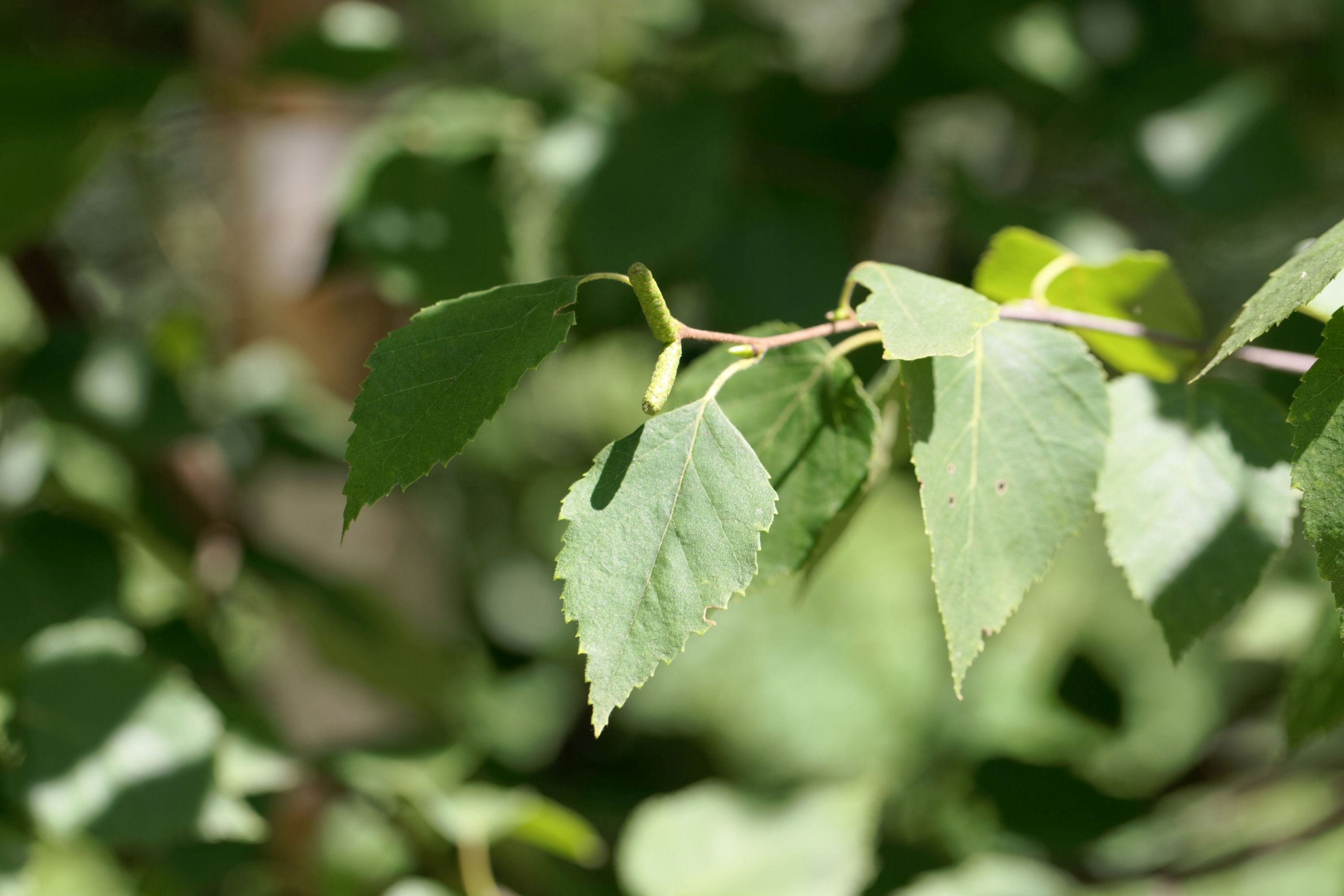Paper birch
(Betula papyrifera)

Description
Betula papyrifera (paper birch, also known as (American) white birch and canoe birch) is a short-lived species of birch native to northern North America. Paper birch is named for the tree's thin white bark, which often peels in paper like layers from the trunk. Paper birch is often one of the first species to colonize a burned area within the northern latitudes, and is an important species for moose browsing. The wood is often used for pulpwood and firewood. It is a medium-sized deciduous tree typically reaching 20 m (66 feet) tall, and exceptionally to 40 m (130 feet) with a trunk up to 75 cm (30 inches) in diameter. Within forests, it often grows with a single trunk but when grown as a landscape tree it may develop multiple trunks or branch close to the ground. Paper birch is a typically short-lived species. It handles heat and humidity poorly and may live only 30 years in zones six and up, while trees in colder-climate regions can grow for more than 100 years. B. papyrifera will grow in many soil types, from steep rocky outcrops to flat muskegs of the boreal forest. Best growth occurs in deeper, well drained to dry soils, depending on the location. Betula papyrifera is mostly confined to Canada and the far northern United States. It is found in interior (var. humilus) and south-central (var. kenaica) Alaska and in all provinces and territories of Canada, except Nunavut, as well as the far northern continental United States. Isolated patches are found as far south as the Hudson Valley of New York and Pennsylvania, as well as Washington. High elevation stands are also in mountains to North Carolina, New Mexico, and Colorado. The most southerly stand in the Western United States is located in Long Canyon in the City of Boulder Open Space and Mountain Parks. This is an isolated Pleistocene relict that most likely reflects the southern reach of boreal vegetation into the area during the last Ice Age. In Alaska, paper birch often naturally grows in pure stands by itself or with black or white spruce. In the eastern and central regions of its range, it is often associated with red spruce and balsam fir. It may also be associated with big-toothed aspen, yellow birch, Betula populifolia, and maples.
Taxonomic tree:







